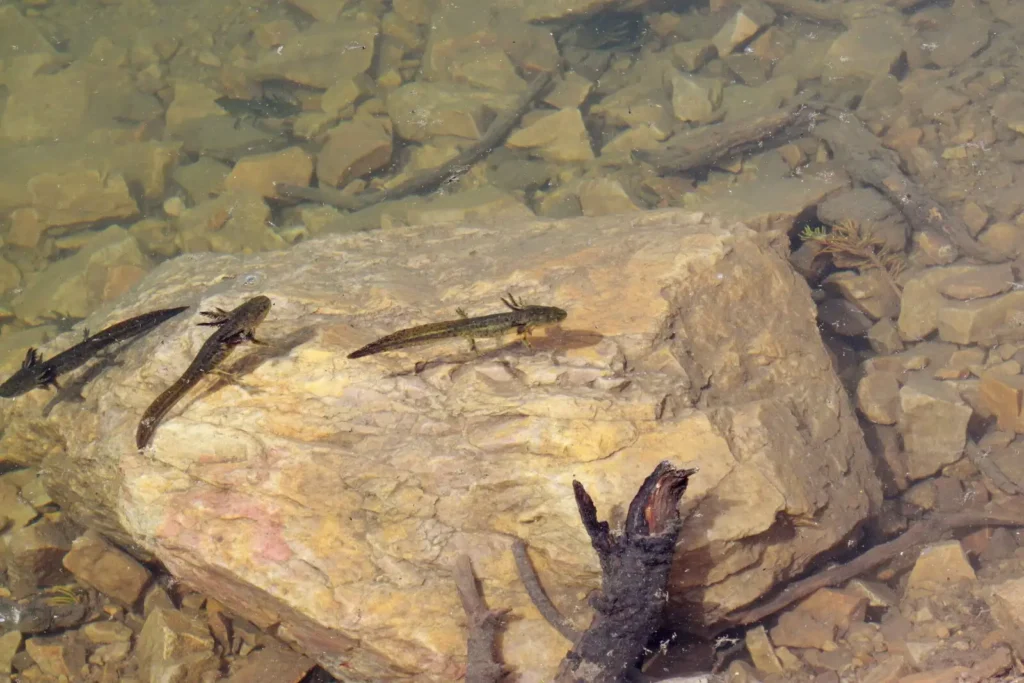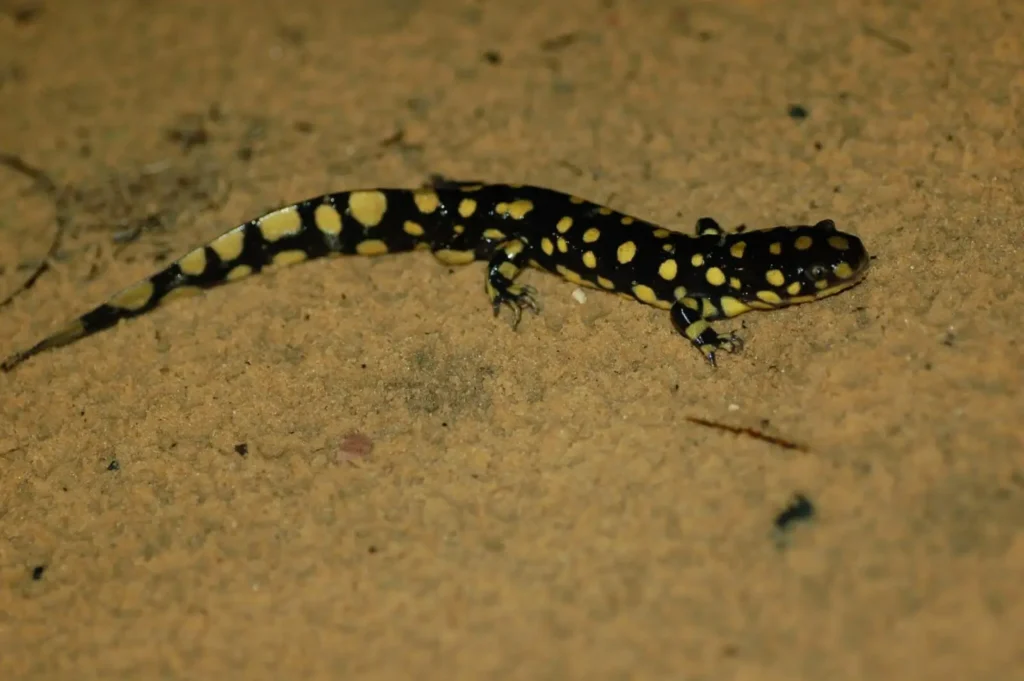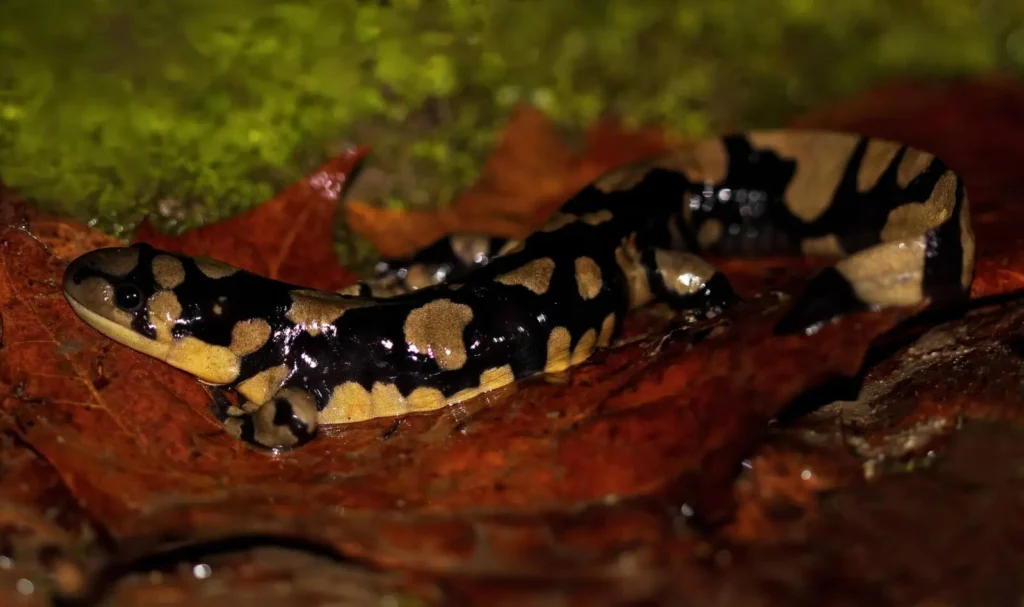🌍 Tiger ambistoma (Ambystoma tigrinum)- one of the largest and most interesting representatives of amphibians in North America. It combines mysterious underground lifestyle, expressive coloring and unique regeneration abilities.
🐉 What is the special feature of this ambistoma?
✔ Large size - up to 35 cm in length
✔ Ability to regenerate - can restore limbs and even parts of the heart
✔ Two life cycles - larval stage and terrestrial adult form
✔ It lives in burrows underground - almost does not appear on the surface
✔ Nocturnal predator - preys on insects, small mammals and amphibians
📌 This amphibian is a real mysterious inhabitant of the underworld, hiding from the human eye.

Scientific classification
✔ The Kingdom: Animals (Animalia)
✔ Type: Chordal (Chordata)
✔ Class: Amphibians (Amphibia)
✔ Row: Tailed ones (Caudata)
✔ Family: Ambistomovye (Ambystomatidae)
✔ Gender: Ambistomas (Ambystoma)
✔ View: Ambystoma tigrinum
📌 The tiger ambystoma is a close relative of the famous axolotl (Ambystoma mexicanum), but, unlike it, it undergoes complete metamorphosis and leads a terrestrial lifestyle.
Appearance and description
🐅 What does tiger ambistoma look like?
✔ Length: 20-35 cm (record – 40 cm)
✔ Weight: 120-300 g
✔ Colour: Black or dark brown with yellow or olive spots
✔ A thick, massive body with smooth skin
✔ Short, strong limbs with developed fingers
✔ Big head and wide eyes
✔ A long tail that helps you balance while moving
📌 The tiger ambistoma's coloration serves as an excellent camouflage, allowing it to remain invisible among the leaves and soil.
Distribution area
🌎 Where does the tiger ambistoma live?
✔ USA and Canada - from the East Coast to the Rockies
✔ Mexico - northern regions
✔ Forests, meadows, prairies, deserts
✔ Wet places, near ponds, lakes and streams
📌 Unlike many amphibians, Ambistoma can survive even in semi-desert conditions, hiding in deep burrows.

Lifestyle and behavior
🌙 When is it active?
✔ Nocturnal creature - goes hunting after sunset
✔ It hides in burrows during the day or under the rocks
✔ Moisture-loving, but can survive in dry conditions
🕳 Where is he hiding?
✔ Digs holes on its own or it uses abandoned rodent tunnels
✔ It lives underground almost all year round, except for the rainy season
📌 Tiger ambistoma spends 90% of its life underground and only comes to the surface during the breeding season.
Food and hunting
🍽 What does the tiger ambistoma eat?
✔ Insects (beetles, crickets, grasshoppers)
✔ Earthworms, slugs
✔ Small amphibians and lizards
✔ Newborn rodents
📌 Ambistoma-a voracious predator that attacks prey suddenly, sharply grabbing it with its mouth.
Reproduction and development
💖 How does reproduction occur?
✔ Spring (March-May)
Males release spermatophores, which females absorb through the cloaca
✔ The female lays up to 5,000 eggs into the water
✔ Tadpoles hatch in 2-4 weeks
🔄 Metamorphosis
✔ The larval stage lasts 3-6 months
✔ Some individuals may stay in the larval stage for life (neoteny)
📌 If environmental conditions are unfavorable, the larvae may not metamorphose and live as axolotls.

Life span
⌛ How long does the tiger ambistoma live?
✔ In nature-10-15 years
✔ In captivity - up to 20 years
📌 Thanks to its secretive lifestyle, the tiger ambistoma can survive to a very old age, avoiding predators.
Natural enemies and threats
⚠ What threatens tiger ambistoma?
✔ Predators - snakes, birds of prey, mammals
✔ Habitat destruction
✔ Water pollution
📌 The tiger ambistoma is not endangered, but its population is declining due to human intervention.
Interesting facts about tiger ambistoma
💡 It can live for almost 20 years!
💡 Her skin contains toxins that protect her from predators!
💡 It can restore limbs and even parts of the heart!
💡 In some populations, adults remain in the water and do not transform into a land-based form!
💡 It leads a hidden lifestyle, so a person meets it very rarely!
Conclusion
AMB tiger ambistoma – one of the largest and most mysterious amphibian species, combining powerful adaptive abilities, a hidden lifestyle and a unique biology.
⚠ It the ability to regenerate and double cycle of development make it extremely interesting for science.
🔥 This ambistoma is a real" tiger " of the underworld, which remains one of the least studied amphibians on our planet! 🦎🌍